Safari Starter: On Safari in Uganda
From gorillas in the rainforest, to lions on the plains, a safari is top of many a bucket list. First-timer Rosie Buddell visits Uganda to find out what the fuss is all about.
This is a feature from Issue 14 of Charitable Traveller.
“You can sit anywhere you like,” says Joel, the pilot, as I board the smallest plane I’ve ever been on. There are only 12 passenger seats on this turboprop Cessna so my decision is easy.
We take off from Entebbe airport, a 90-minute drive south of Kampala, heading for the tiny airstrip at Kisoro in the southwest of the country, near the borders with the Democratic Republic of Congo and Rwanda. Beneath us, Lake Victoria shimmers in the sunlight before the ground turns to rolling hills covered with lush green vegetation interrupted with tiny villages. Our destination is Bwindi Impenetrable National Park, our base for the next two nights and home to around half the world’s remaining mountain gorilla population.
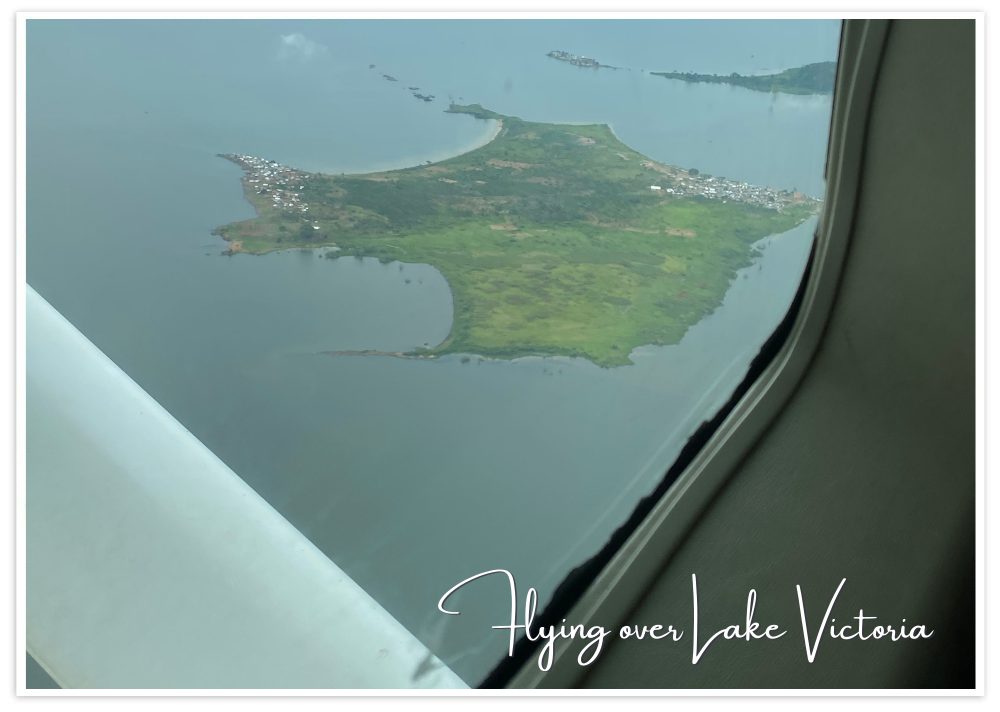
I’ve come to Uganda for my first safari because of the country’s gorilla population, as well as having four of the big five, and being the setting of my favourite childhood movie, George of the Jungle. As we drive through the winding dirt roads, potholed by the rainy season, I’m struck by how green and lush the landscape is here. First, tea plantations cover the hillsides, then tropical rainforest full of eucalyptus trees, banana trees, and tall palms blanket the steep hillsides and deep valleys.
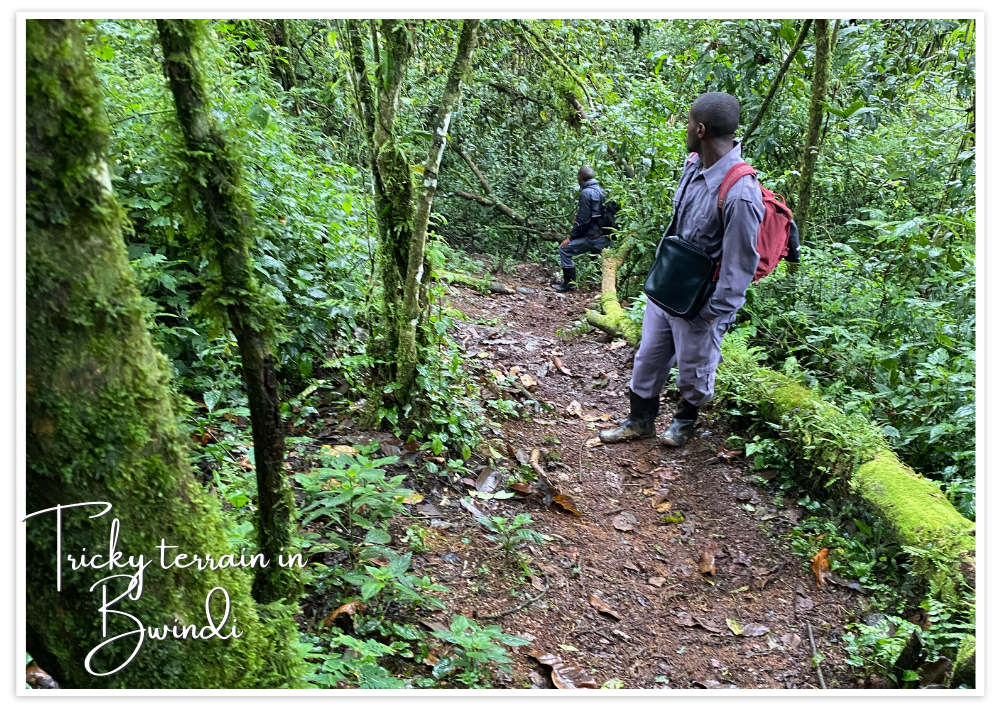
Silverback lining
We arrive at Nkuringo Bwindi Mountain Gorilla Lodge on the edge of the park and staff greet us with a glass of mango juice, a warm hand towel, with eucalyptus oil and a hand massage. Like everywhere else on this trip, we’re met by incredibly friendly and attentive staff. We’re told that as we’re up in the mountains, it can get very cold and the mosquitos don’t like it, so we can leave our insect repellent in our rooms and put on extra layers. Before we go to bed that night, housekeeping comes in to light a fire and slide a hot water bottle into our beds.
This lodge supports two local communities with donations, employment, and cultural performances, so one evening we’re treated to a musical performance by the children of Nkuringo Vulnerable Youth Stars, a group of mainly orphaned children that are housed in the nearby town. Their drumming and singing pulls other guests out of their rooms, and we all get to witness the pure joy written across their faces. After the performance, handmade items are brought out for us to purchase. – a gorilla’s head fridge magnet now sits proudly on my fridge.
The next morning we’re up and out by 6 am to start our Gorilla trek in the national park. We’ve been warned that we could be trekking through the forest for anywhere between two and four hours before we see any gorillas.
“Nature doesn’t take appointments, we’ll see what she want’s us to see, when she wants us to see it,” Omax, our guide tells us. It’s fair enough, I think, but I’m not sure I’m capable of hiking for eight hours straight through a forest called ‘impenetrable’.
Luckily, nature is very much on our side, and we find a group of six gorillas around an hour into the trek, including an adorable three-month-old baby! They’re all nestled into a grassy area, eating bamboo shoots and leaves.

Humans share 98% of our DNA with gorillas, so we’re told to maintain a 2-metre distance from them and wear face masks, as we could be passing viruses and diseases between us. I have never been this close to a wild animal before – save for that time a badger crossed the road in front of me at home – and I’m shocked by how easy they are with us gawking at them and snapping pictures. Omax tells us that these gorillas have been habituated so they view humans as just another inhabitant of the park, rather than a threat.
We had been advised ahead of time to hire a porter for the trek, which seemed excessive, But the terrain can be really tricky in the forest, so not only do the porters help carry equipment, but they can also help with any of the more challenging parts of the journey. The porters are all Batwa, a community that lived in the forest for more than 300 years before being relocated when the forest became a national park. Omax tells us that they enter the forest and walk its paths regularly, and hiring them helps to support the displaced. Within five minutes my porter, William, proves his worth when I slip in some mud and he stops me from falling down.
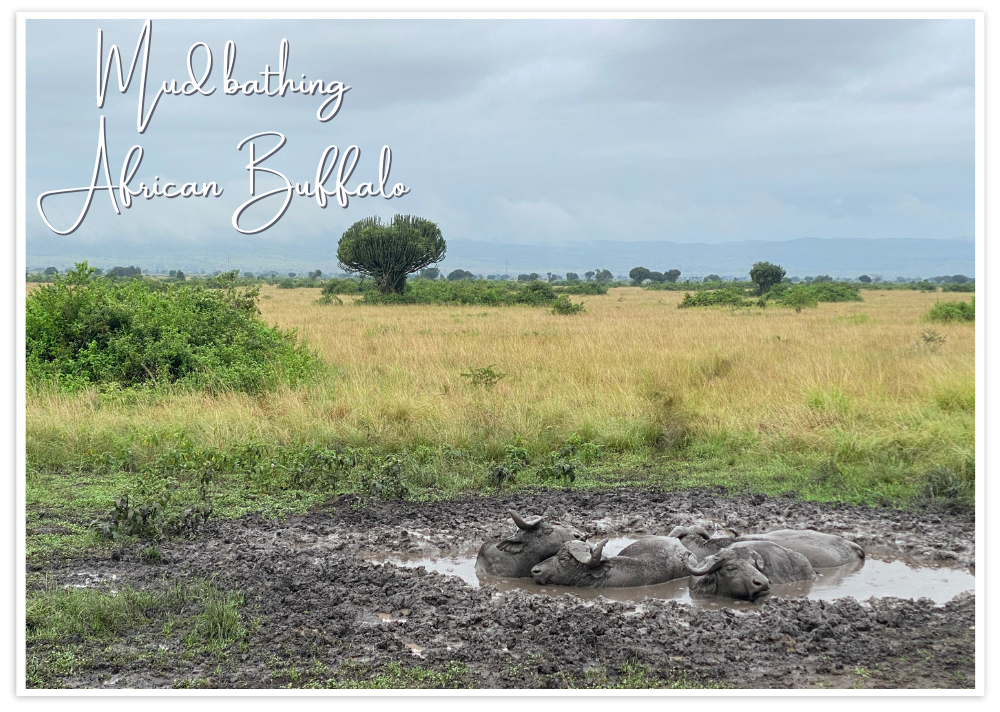
A Drive on the Wild Side
The next morning, we head down the mountain for a game drive in Queen Elizabeth National Park. Named after the late monarch, this was the first national park established in Uganda and covers an area nearly as big as the island of Mauritius. While driving through the verdant grasslands in our open 4WD, we only had to wait a few moments before spotting some lions lazing on the limbs of an acacia tree, escaping the heat and the flies on the ground.
A few minutes later and we pull up next to buffalo, cooling down in the mud, waterbuck grazing near a pond, and the famous Uganda Kob – a type of antelope and the national emblem of Uganda – feeding on the grass.
After lunch, we head for a cruise on the Kazinga Channel. Connecting Lakes George and Edward, it’s a popular spot for buffalo, hippos, and elephants to cool off in the water and graze on the hillside. We see all three and also spot kingfishers, river birds, and Nile crocodiles.
The next day we drive through Lake Mburo National Park and see zebras, and even spot some giraffes in the distance. Later that evening, back at our second lodge, Park View Safari Lodge, on the edge of Queen Elizabeth National Park, I run out of fingers trying to count up all the different wild animals I’ve seen. All the species, together with all the delicious, fresh, organic food I’ve eaten, has made for a very special trip.
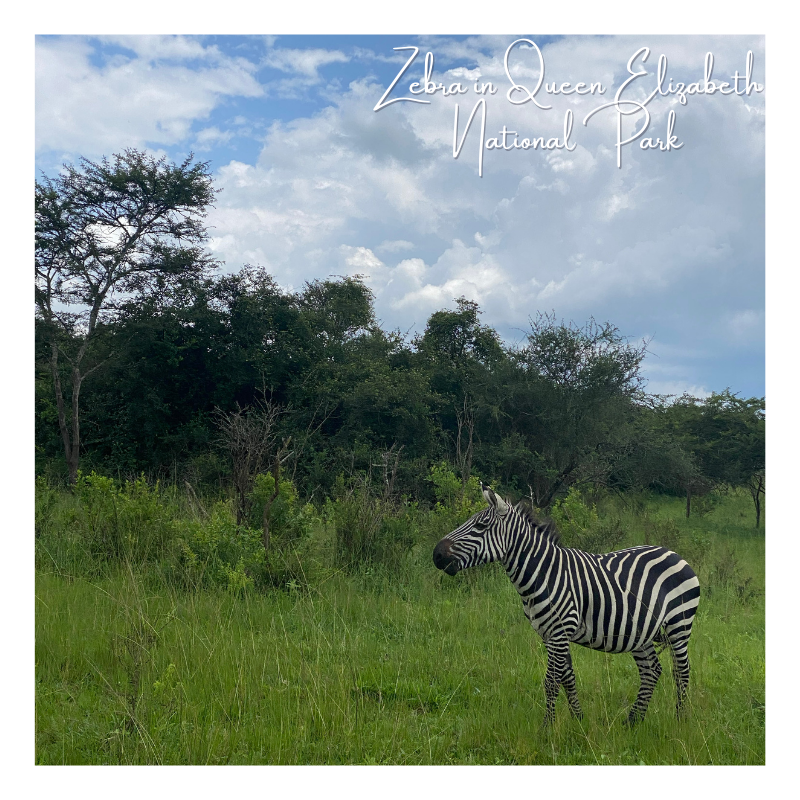


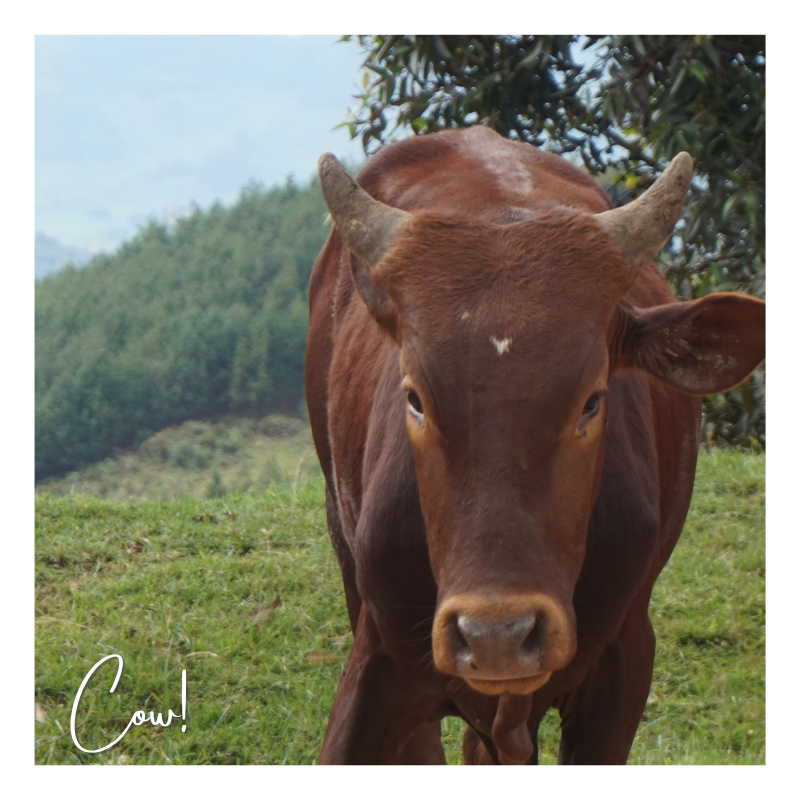
How to Safari: Rosie's Top Tips
- Get vaccinated before you travel – some are mandatory. You’ll need to let your GP know 6 weeks in advance – or some high street pharmacies offer travel clinics with vaccinations.
- pack insect repellent, a sports bra (helped make the off-road journeys more comfortable), warmer clothing for the evenings and waterproofs. Pack neutral colours – browns, beiges, and greens help you blend in best.
- Visit local communities. Support their economies by buying beautiful handicraft souvenirs and tasty treats.
- Try traditional food – Rolex, a Ugandan breakfast of Spanish omelette rolled in a chapati, quickly became a staple at our breakfast table.
- Don’t go it alone. Hire a driver or guide as they’ll have so much information to share with you, and be able to show you the best hidden spots. And if you go gorilla trekking, hire a porter – they’re so knowledgeable of the area and will be able to help you cross the terrain much easier than you would on your own.
- Take tissues and hand sanitiser – not all the bathroom stops will be the standard you’re used to
- Take a photocopy of your passport – you’ll need it for your gorilla tracking permit, but it’s also a good thing to have with you.
- Take binoculars. Especially if you’re a bird enthusiast. They’ll also help you to spot animals in the distance easier.
- Bring a camera. Trust me – there’ll be plenty of times you’ll want to capture the scenes before you to preserve the memory, but don’t spend the whole time looking through the viewfinder.
- Remember, you can’t make appointments with nature. You’ll see what you see on the animal’s terms, not yours.
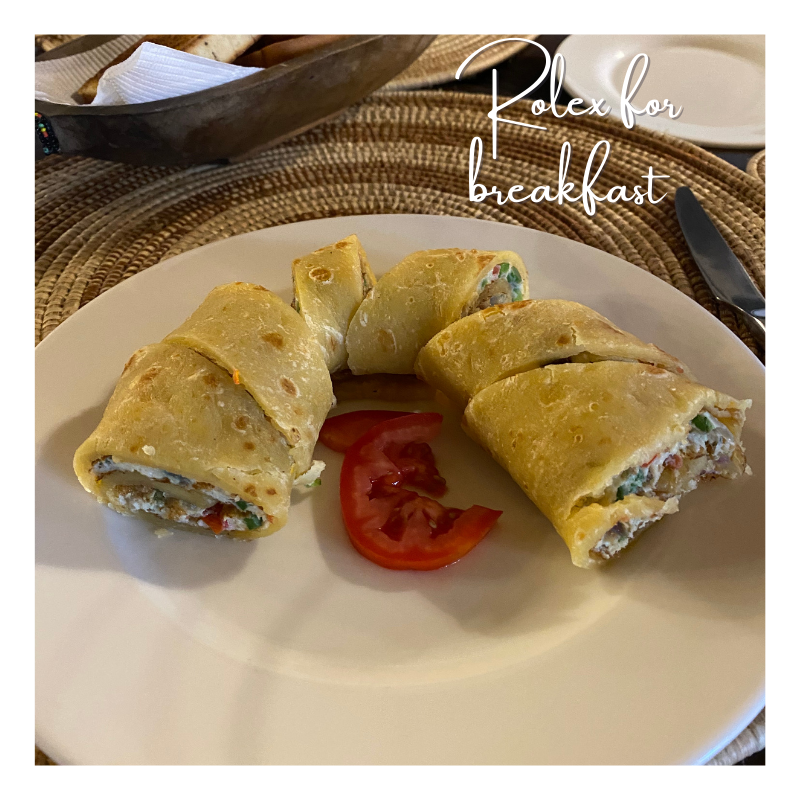


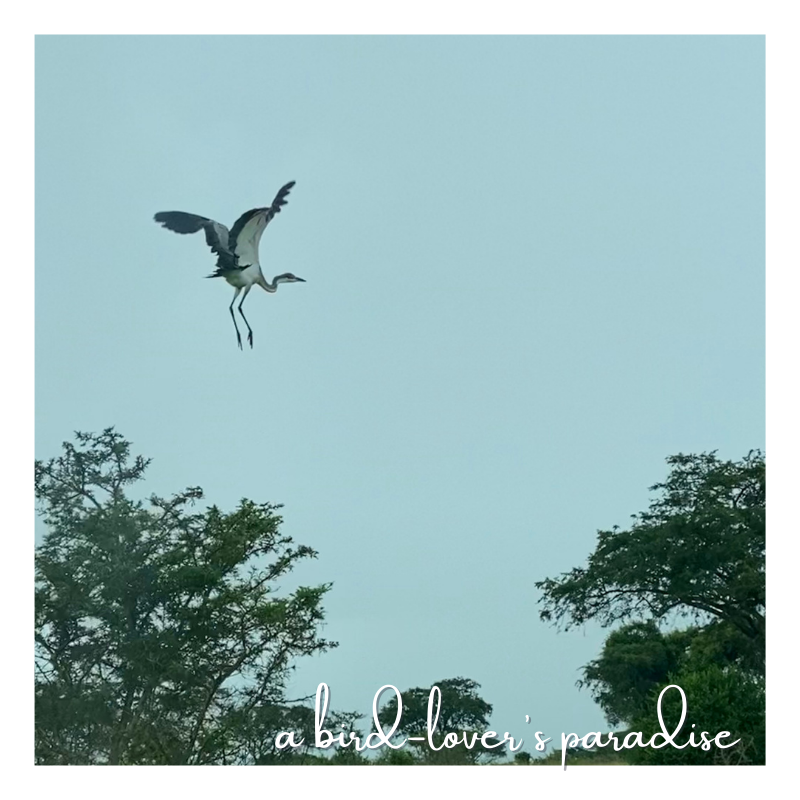
Travel for good in Uganda
Opt for eco-friendly accommodation. Nkuringo Bwindi Mountain Gorilla Lodge is solar-powered the water in the showers is harvested rainwater, and it’s got a drinking water fountain to refill your water bottle and a Pack for a Purpose donations bucket.
Bringing donations of clothes, school supplies, toys and period products to hand out among communities and schools is also a good way to give something back (plus you can fill the now empty case with handmade souvenirs to take home!). Shopping local and tipping guides, drivers, and hotel staff is another way to support the communities you visit.
The easiest way to support communities in Uganda is to book with Charitable Travel and donate 5% of your holiday price to any of our charities delivering projects in Uganda:
Rafiki Thabo Foundation works to improve the quality of life for deprived members of local communities by providing them with the means to continue with their secondary and higher education. Rafiki Thabo have a link school in Kabale, near Bwindi, that you can visit on your trip.
CURE International‘s global network of eight children’s hospitals are world-class facilities with highly trained surgeons and caregivers providing charitable specialised care for children with conditions such as clubfoot, bowed legs, cleft lips, untreated burns and hydrocephalus.
Tackle uses the power and popularity of football to deliver HIV and sexual and reproductive health and rights (SRHR) information and services to young people on football pitches across the continent.
Legs4Africa helps amputees live independently, through the provision of prosthetic legs along with physical and emotional rehabilitation in sub-Saharan Africa.
Get in touch with our expert travel agents to plan your perfect safari today!
This is a feature from Issue 14 of Charitable Traveller.

















 by net effect
by net effect